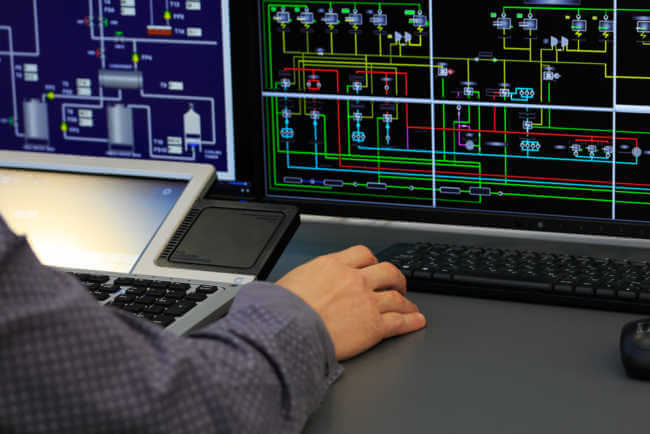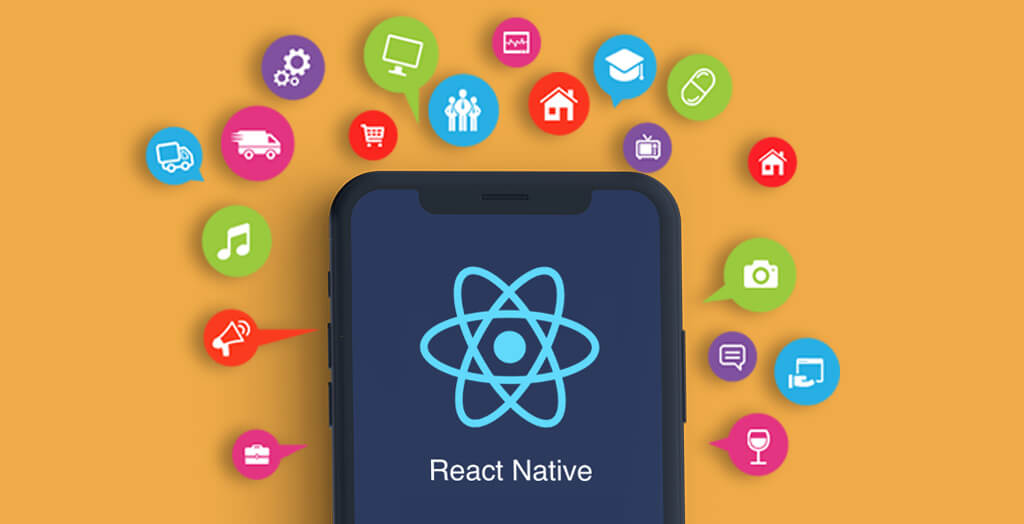The data collection, visualization, and remote control functions are handled through the SCADA system itself. It gathers information from sensors and other gadgets, offers real-time monitoring and data visualization, produces warnings and notifications, and enables operators to communicate with the system. However, the SCADA system is unable to communicate with field devices and manage industrial operations without a PLC or other comparable control devices.
What is PLC?
A programmable logic controller is referred to as a PLC. It is a specialized digital computer that controls and monitors machines or processes in industrial automation systems. PLCs are built to resist punishing industrial settings and offer dependable, accurate control over a variety of applications.
What is SCADA?
Supervisory Control and Data Acquisition is referred to as SCADA. It is a system used to keep an eye on and manage infrastructure, facilities, and industrial processes. Industries including manufacturing, electricity production, water treatment, oil and gas, and transportation frequently use SCADA systems.
Can a SCADA system work without a PLC?
The PLCs or control devices carry out operations including reading sensor input signals and carrying out control logic. And producing output signals to activate equipment like motors, valves, and pumps. At the process level, they perform the necessary automation and control tasks. The SCADA system interacts with the PLCs to send control commands, receive data updates, and track the status of the processes.
1. Distributed Control System (DCS):
A DCS may be utilized in some industrial settings instead of PLCs. Control, monitoring, and data collecting tasks are all combined into one integrated platform by DCS systems. DCS systems often have more sophisticated control capabilities than SCADA systems. Which, despite being identical, enables them to handle control tasks without the need for separate PLCs.
- Architecture: DCS systems feature a distributed, hierarchical architecture. They are made up of numerous control modules or units that are dispersed all across the facility or plant. Each module is in charge of managing a certain area or procedure within the system.
- Control Functions: Monitoring, data collecting, process control, alarming, trending, and reporting are just a few of the control functions offered by DCS systems. They provide cutting-edge control techniques to boost industrial operations’ effectiveness and efficiency.
- Communication: To enable data interchange between the various control modules and field equipment, DCS systems rely on reliable communication networks. To enable dependable and real-time data transfer, communication protocols including Profibus, Foundation Fieldbus, and Ethernet/IP are frequently utilized.
- Redundancy: To achieve high availability and dependability, redundancy elements are frequently used in DCS systems. To ensure backup and fault-tolerant operation, redundant components such as controllers and communication networks are provided.
2. Remote Terminal Units (RTUs):
RTUs are smart devices that are use to remotely monitor and control field equipment. RTUs are frequently more concentrated on data collecting and communication, even if they perform similarly to PLCs in terms of functionality. It can directly contact through a SCADA system to collect data, manage devices, and keep an eye on operations.
- Functionality: RTUs are made to connect to field devices like switches, meters, actuators, and sensors. They give control signals to actuate or remotely operate these devices while simultaneously gathering real-time data from them. To interact with a range of field devices, RTUs often come with built-in analog and digital input/output (I/O) modules.
- Communication: To transfer data between field devices and the central control system, RTUs rely on communication networks. They can communicate using a variety of protocols, including Modbus, DNP3, Profibus, or Ethernet/IP. Depending on the application and infrastructure accessibility, RTUs can communicate over wired networks.
- Data Acquisition and Processing: RTUs collect data from field devices and carry out operations on them like data validation, scaling, and filtering. For monitoring and analysis, they transform analog signals into digital values and send them to the central control system. On the basis of the data received and established control strategies, RTUs can also carry out control logic and algorithms.
3. Software-Based Control:
In some circumstances, software-based solutions operating on common computing platforms can be used to implement control functions. These systems accomplish control tasks without the requirement for specialized hardware like PLCs by utilizing cutting-edge algorithms and programming methodologies. They might, however, need strong communication and real-time processing capabilities.
- Communication Interfaces: Communication interfaces are frequently used through software-based control systems to interact with field equipment and sensors. These interfaces, which might be serial or Ethernet-based, communicate with the devices using proprietary or OPC (OLE for Process Control)- or Modbus-based communication protocols.
- Integration with SCADA or HMI Systems: For visualization, monitoring, and remote operation, software-based control systems can connect with SCADA or HMI (Human-Machine Interface) systems. To show real-time information, provide alarms and events, and enable operator engagements, they can communicate data with these systems.
- Flexibility and Scalability: Software-based control systems can quickly update or modify through software modifications, which gives them flexibility and scalability. They don’t require significant hardware alterations to adapt to various control strategies or process requirements. By upgrading the computing platform or changing the software configuration, software-based control systems can also upgrade to handle more complex processes or more control points.
Although a SCADA system is capable of functioning without a PLC, the specific implementation will depend on the specifications, complexity, and limitations of the industrial process that is being monitored and managed. System architecture, scalability, performance, and compatibility with existing infrastructure are some of the variables that will have an impact on the control method or device that is chosen.
Asteam Techno Solutions Pvt. Ltd is a commercial and service company specializing in comprehensive services for our customers, as well as supply of difficult-to-obtain industrial automation spare parts. We provide everything that our clients need with reduced time of preparing quotations to the absolute minimum. Due to our extensive expertise working with both local and international suppliers, we are able to provide the highest-quality items at low costs. We specialize in deliveries of the following brands: Allen Bradley, Schneider Electrics, Omron, Siemens, Phoenix Contact, Moxa, Vipa, and many more.









